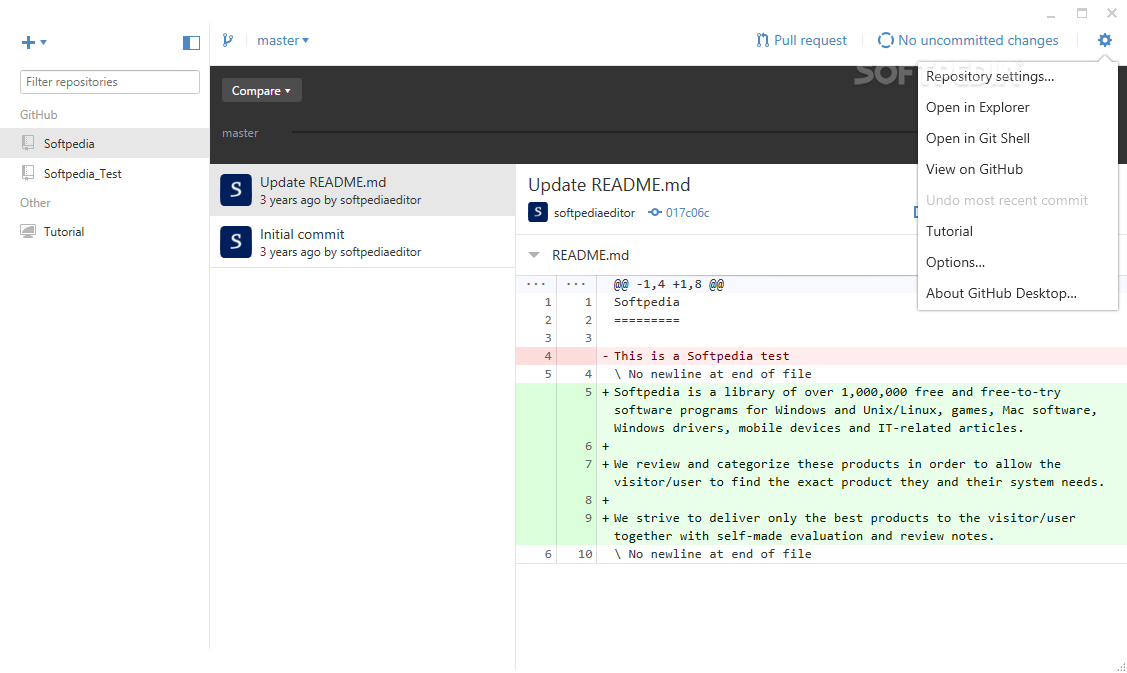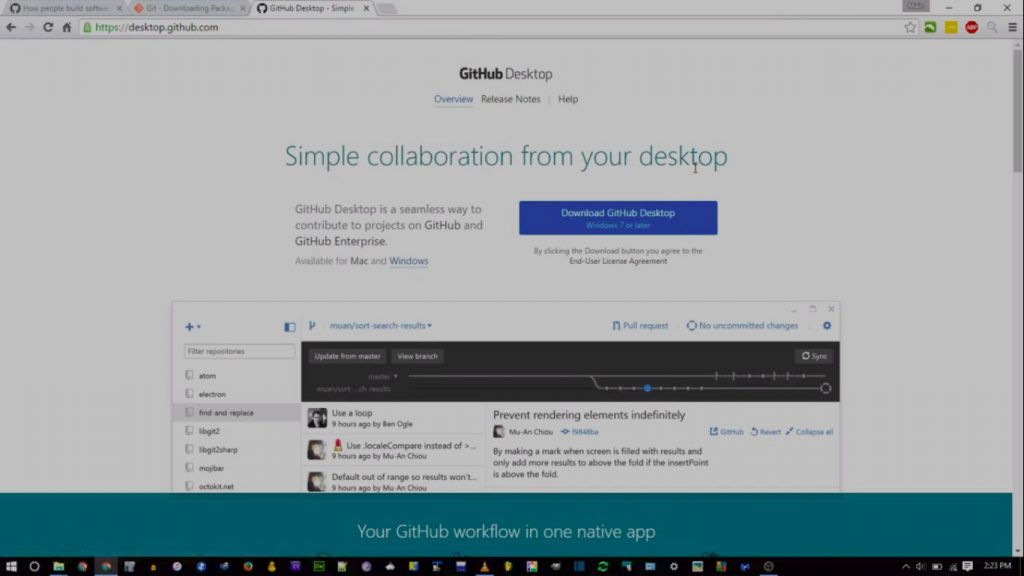

Use this technique in the situation where
GITHUB DESKTOP ADD FILES ZIP FILE
Drag the zip file into the section where you can attach binaries.įollow these steps to rollback a commit without losing any changes.On the GitHub site, edit the release by clicking the pencil icon.The command should have created a file named MapsAlive-v1.3.zip that contains one top-level folder named MapsAlive.If you get fatal: Not a valid object name, make sure that you did a fetch origin in GitHub desktop after publishing the release with that tag.In this example, MapsAlive is the "Addon directory name" referred to in the instructions.
GITHUB DESKTOP ADD FILES ARCHIVE
Type git archive -output=MapsAlive-v1.3.zip -prefix=MapsAlive/ v1.3.gitattributes per the Addon instructions. In Windows Explorer, go into the folder containing the plugin's repository e.g.Read the Omeka instructions to Register an Addon.If you want the release to be published on the Omeka plugins site, follow the steps below. In GitHub desktop, click the Fetch Origin button to get new tag into the local repository.Specify the release title in the form Release v1.0.0.

GITHUB DESKTOP ADD FILES HOW TO
If you accidentally commit all the files, see how to rollback a commit It is better to uncheck all the boxes and then comment/commit one at a time as explained below. Will apply to all changed files in a single commit, but this is usually not what you To commit the changes to the local repository (but not to GitHub in the cloud), you need to add a briefĬomment describing the changes and then click the Commit to master button.īy default, every change is selected with a check mark as shown above.

The folder now contains new Git files as shown in the example below for the newly created AvantImport

For Local path, choose the folder containing the folder that you want to make the repository from.Provide a Description or leave it blank (you can add one later in GitHub online).For Name use the same name as the folder containing the files.įor example, if you are adding a new plugin located in /plugins/AvantImport, type AvantImport as the repository name.Choose File > New Repository from the top menu bar.


 0 kommentar(er)
0 kommentar(er)
